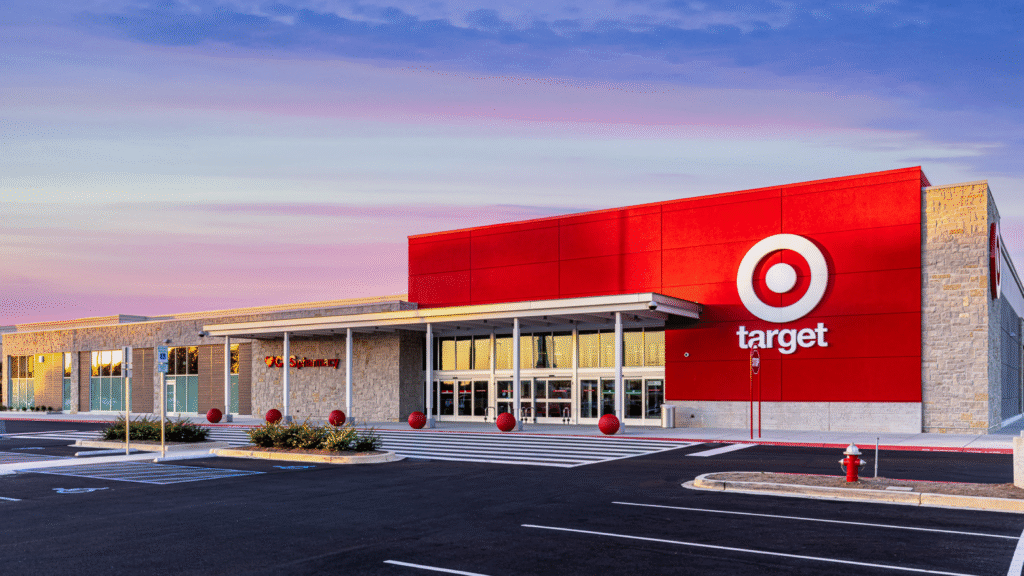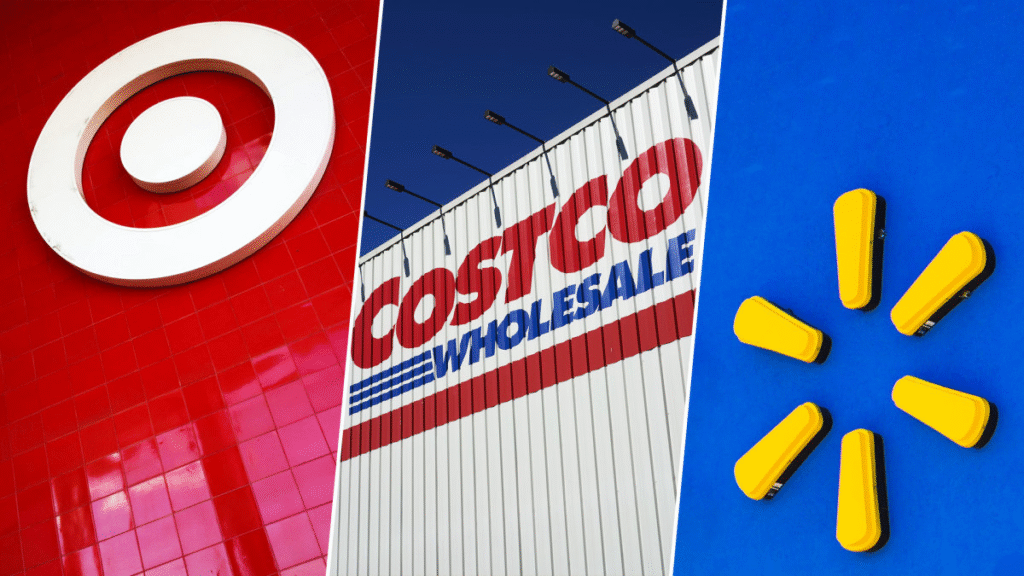1. Company Overview
Target Corporation, commonly known as Target, is an American retail giant headquartered in Minneapolis, Minnesota. It ranks as one of the largest U.S. retailers and is a component of both the S&P 500 and S&P 100 indices . The company operates nearly 2,000 stores across the United States and emphasizes trendy, yet affordable general merchandise and private-label brands . Founded in 1962 by John Geisse and Douglas Dayton under the Dayton Company—later renamed Dayton-Hudson and then Target Corporation in 2000—the brand has become iconic with its distinct red bullseye logo . Alongside its brick-and-mortar presence, Target supports a strong digital platform and owns several in‑house brands like Good & Gather, Room Essentials, and more . The company also garners consistent praise for its philanthropic efforts in the U.S.

2. Most Recent Earnings (Q2 2025)
In Q2 2025, Target reported adjusted earnings per share of $2.05, slightly above analysts’ expectations of $2.04—a $0.01 beat . Revenue declined approximately 0.9% year-over-year to roughly $25.2 billion, modestly exceeding analyst estimates . Comparable store sales dropped around 1.9%, but this represented a modest improvement over prior quarters . Despite the earnings beat, the stock plunged around 10% as investors focused on deeper structural challenges and concerns over growth . Target reaffirmed its full-year adjusted EPS guidance in the $7.00–$9.00 range, along with expectations of a low-single-digit decline in sales .
3. Company Background: Founding, Products, Funding, Competitors, Headquarters
- Founding & Founders: The retail concept originated under the Dayton Company; Target’s first store opened in 1962 in Roseville, Minnesota, initiated by John Geisse and Douglas Dayton. The parent company renamed itself Target Corporation in 2000 .
- Products & Private Labels: Target provides a broad range of general merchandise, emphasizing style and affordability. It operates numerous private-label brands—Good & Gather (food), Room Essentials (budget furniture), Threshold (premium furniture), up&up (everyday essentials), and others like Xhilaration, Boots & Barkley, etc. .
- Headquarters: The company is headquartered in the Target Plaza complex in Minneapolis, Minnesota .
- Funding: As a public company, Target hasn’t raised venture capital; it relies on public markets and internal financing.
- Key Competitors: Key rivals include Walmart, Amazon, Costco, and off-price retailers like TJX .
4. Market Landscape & Growth Prospects
Target operates within the highly competitive U.S. retail sector, especially in the consumer discretionary and general merchandise space. Consumers are increasingly cost-conscious amid inflation and tariff pressures, which have impacted retail margins . Analysts foresee modestly positive recovery ahead, though specific projections (e.g., CAGR, 2030 expectations) were not provided in the sources.

5. Competitive Environment
Major competitors include:
- Walmart: Larger scale, aggressive pricing, and strong e‑commerce, though Walmart missed EPS expectations in its latest Q2 despite strong online growth .
- Amazon: A dominant e‑commerce player, intensifying competition across categories.
- Costco, TJX: Appeal through membership models and off‑price strategies; TJX continues to draw investor optimism with raised price targets .
6. Competitive Differentiation
Target differentiates through a curated style-forward product mix blended with private brands, often perceived as more upscale than typical discounters. Its omni-channel approach—integrating strong physical stores with digital and same-day fulfillment options—reinforces its guest-centric positioning. The retailer also embraces design-forward partnerships and seasonal assortments to drive appeal.
7. Leadership Overview (max 3)
- Brian Cornell: Longtime CEO, retiring February 1, 2026; will become executive chair .
- Michael Fiddelke: Promoted from COO and head of Enterprise Acceleration Office; will assume CEO role on February 1, 2026. Seen as an insider with operational expertise, though investors question whether it provides fresh strategic direction .
8. Financial Performance Overview (Last 5 Years)
Over 2020–2024, Target’s financial highlights:
- Revenue Trends: Peaked at ~$106.0B in 2021, fell to ~$106.6B by 2024 after a decline .
- Net Income: Rose to ~$6.95B in 2021, then declined to ~$4.09B in 2024 .
- Operating Margins: In Q4 2024, operating income dropped 21% year-over-year; full‑year operating income dipped slightly .
- Balance Sheet: As of 2024, Target held ~$57.8B in assets and ~$14.7B in equity .These trends suggest decelerating revenue and profit growth, pressured margins, and increased operational costs.
9. Bull Case
- Curated, stylish private-label brands drive higher customer loyalty and margins.
- Strong omni-channel infrastructure and same-day delivery enhance guest convenience.
- Internal leadership continuity under Fiddelke may deliver stability and operational efficiencies.
10. Bear Case
- Prolonged sales declines and margin erosion amid tariff- and cost-driven pressures.
- CEO succession lacks external perspective—may limit strategic transformation.
- Intensifying competition from Walmart, Amazon, and off‑price retailers.
11. Analyst Reactions
Earnings beat on Q2 EPS and revenue were overshadowed by leadership transition concerns. Analysts remain divided—some highlight improved store traffic and cost control, while others express skepticism about turnaround strategy . No explicit upgrades/downgrades or price-target changes for TGT were detailed in the sources.

The stock is in a stage 4 decline on the monthly chart, and consolidating stage 1 on the weekly chart looking for a bottom and reversal. The support exists at $89-$94, which it could get to. The daily chart is in a stage 4 as well with a move lower to $89 most likely.